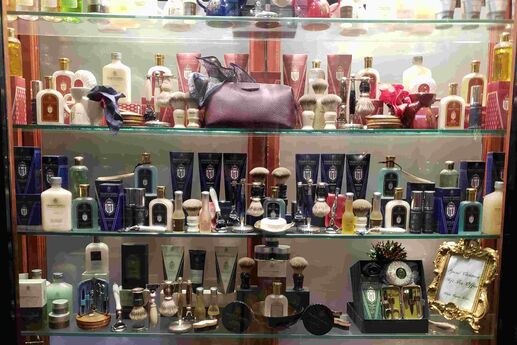The Smell Test That Picks Your Perfect Cologne
Smell is our sharpest sense, and it triggers the strongest memories and emotions. So it would behoove you to toss that bottle of Old Spice and upgrade your man-scent. So follow our advice, and you’ll be able to march out of any store with your head held high, your nostrils intact, and the confidence that you’ll never have to smell like an Eau de Amtrak again.
Basic Training
A few fragrance facts will help you make some basic decisions, says Chely Depablos, manager for the House of Cartier at Bloomingdales in New York City, who’s been helping dudes get their smell on for 15 years. The first distinction you need to focus on is the “concentration,” or intensity, of the scent. The heaviest (i.e., most expensive) to the lightest (i.e., least expensive) are perfume, eau de perfum and eau de cologne, also called eau de toilette. Most guys go for the third one.
Men’s fragrances are divided into three groups:
Citrus “Eighty-five percent of men go for citrus,” says Depablos, “because it’s clean, fresh-smelling and doesn’t overpower you.” And let’s face it; nothing’s worse than coming on like a toxic waste site. Polo Blue by Ralph Lauren is a popular citrus fragrance, but the choices are limitless. For the record, citrus can offer notes of tangerine, grapefruit, cypress and even mint.
Green colognes, like Marc Jacobs Men, are sweeter and also good for everyday use.
Spicy (or woodsy), is great for special occasions or for any time you put on the pinstriped suit. Depablos recommends Declaration or Roadster by Cartier. “Women love its subtle notes of cardamom, ginger, cedarwood and vetiver,” she says. And in a pinch, you could use it to brew up a mean chai latte.
The Sniff Test
Now that you know what you’re looking for, it’s time to put your money where your nose is. Your tools should include your sense of smell, some index (or scent) cards, and a cup of coffee … we’ll explain later.
Once you’ve nosed in on the categories that appeal to your sensibilities, confidently announce that you’re looking for something -- you fill in the blank: citrus, green or spicy. But don’t let Serge the counter guy crop-dust you! Have him spritz your scent cards with a few different offerings, and give each a good whiff. In between each, take a sip of coffee (or least a sniff) to reset your sense of smell. When you’ve got it down to two or three that you like, then dab it on your hand or wrist and see how it smells on you.
It’s true: Every scent smells a little different on every body. So to avoid buying a bottle of $150 Raid, you’ll have to test it on your skin before leaving the store.





